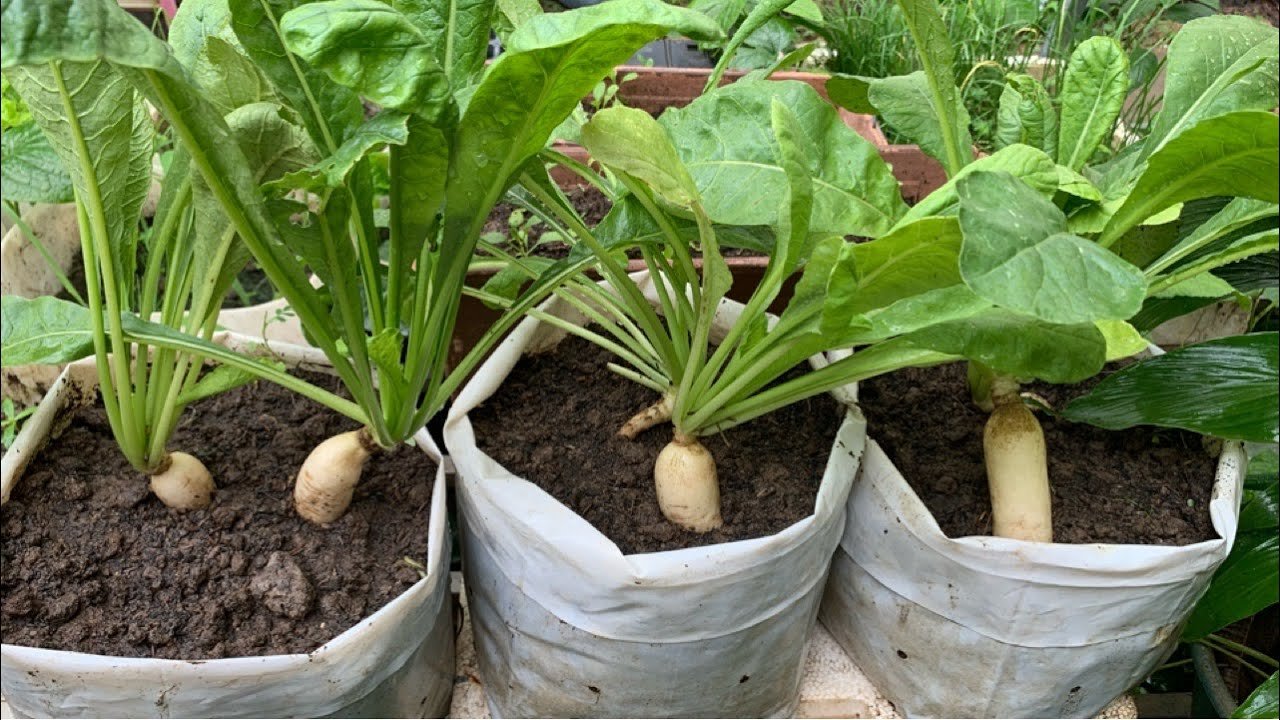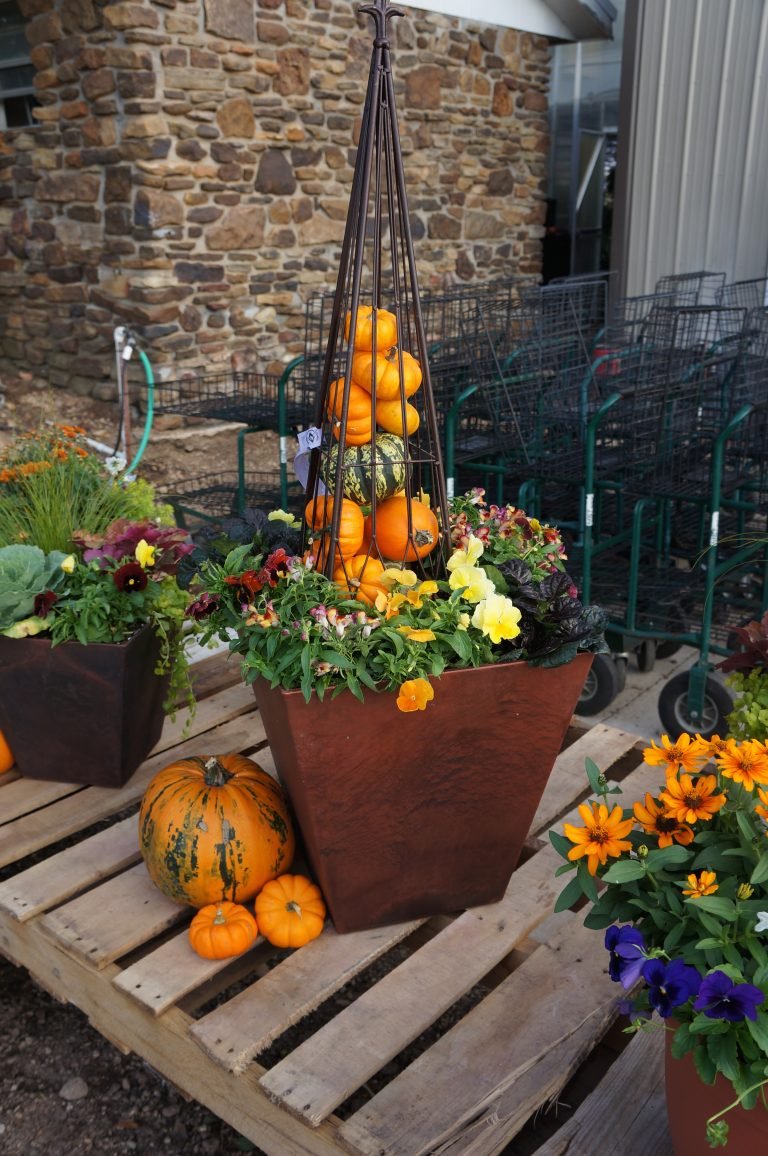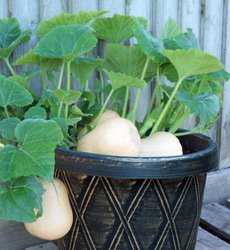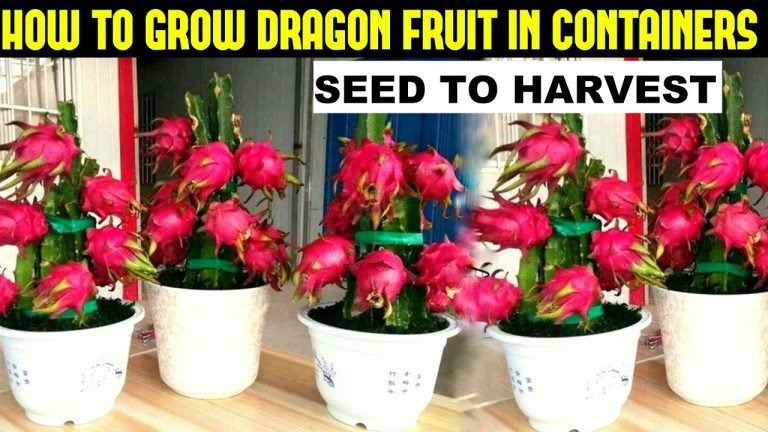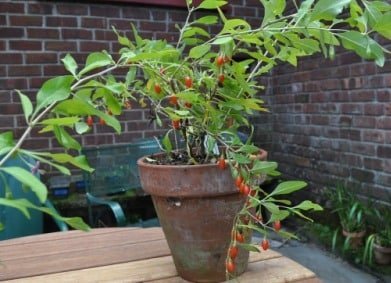how to grow daikon radish in a pot – [Beginners Guide]
Hi there! If you’re looking for a tasty, crunchy addition to your home-grown vegetable garden, look no further than the daikon radish. These radishes are not only delicious but also packed with vitamins and minerals. And the best part? They’re easy to grow in pots, making them the perfect addition to a small kitchen garden or a patio container garden.
Growing daikon radish in pots is a great option for those who want to grow their own food but have limited space. Pots allow you to control the soil quality, water drainage and exposure to sun, which all play a crucial role in the success of growing daikon radishes. With proper care and attention, you can expect to harvest your first crop in just 30-45 days.
I have grown daikon radishes in pots myself, and I can tell you it’s a satisfying and fun experience. Not to mention, the fresh and crispy taste of home-grown radishes is unbeatable. So, if you’re ready to give it a try, let’s get started!
Pot or container selection
The perfect pot for growing daikon radishes is one that is deep and wide enough to provide enough space for the radish roots to grow. A minimum depth of 8-10 inches and a width of 12-14 inches is ideal for a single plant. If you plan to grow multiple plants in a single pot, then choose a pot that is at least 24 inches wide.
Pot capacity is also an important factor to consider when growing daikon radishes in pots. A general rule of thumb is to use a pot that can hold at least 5 gallons of soil. This ensures that the soil stays moist and provides enough nutrients for the radish plants to grow.
Pot construction is another key factor to consider. The pot should have good drainage holes in the bottom to prevent water from collecting at the bottom, which can lead to root rot. A pot made of terra cotta or plastic is a good option, as these materials are light and porous, allowing air to circulate freely around the roots. Additionally, a pot with sides that are not too tall is preferred, as it makes it easier to reach the plants to water and care for them.
In conclusion, when choosing a pot for growing daikon radishes, look for one that is deep and wide enough to accommodate the plants, has a capacity of at least 5 gallons, and is made of a material that allows for good drainage and air circulation. Happy planting!
Make suitable soil mix
Daikon Radish Soil Requirements:
Daikon radish is a hardy root vegetable that grows well in a variety of soil types, but for optimal growth, well-draining soil with a slightly acidic to neutral pH of 6.0 to 6.8 is preferred.
Soil Mixture:
A good soil mixture for growing daikon radish can be made by combining equal parts of garden soil, compost, and sand or perlite to ensure proper drainage. The soil should also be rich in organic matter to provide essential nutrients for growth.
Importance of Correct Soil Composition:
Having the correct soil composition is crucial for optimal growth of daikon radish. Poorly drained soil can lead to root rot, while soil that is too compact can restrict root growth and reduce yield. Proper soil mixture ensures proper aeration and moisture retention, leading to better root development and healthier plants.
In conclusion, a well-draining soil with a slightly acidic to neutral pH and a mixture of garden soil, compost, and sand or perlite is ideal for growing daikon radish. A correct soil composition is essential for optimal growth and a successful harvest.
How to plant the daikon radish?
Step-by-Step Guide to Planting Daikon Radish in a Pot:
- Preparing the Soil:
Fill the pot with a well-draining soil mixture as described in the previous answer. Make sure the pot has drainage holes at the bottom to allow excess water to drain away from the roots. - Sowing the Seeds:
Sow the daikon radish seeds about 1/2 inch deep and 2-3 inches apart. Water the soil gently after planting to settle the seeds. - Providing Light and Water:
Place the pot in a location that receives full sun or at least 6 hours of direct sunlight daily. Water the soil regularly, keeping it consistently moist but not waterlogged. - Thinning the Seedlings:
Once the seedlings have emerged, thin them out to a spacing of 4-6 inches apart. This allows the remaining plants to have enough space to grow and mature properly. - Fertilizing:
Fertilize the soil with a balanced, all-purpose fertilizer every 2-3 weeks to provide essential nutrients for growth. - Harvesting:
Daikon radishes are ready for harvest when they have reached a desirable size, usually within 30-60 days after planting. Gently pull the radishes from the soil, being careful not to damage the roots.
Conclusion:
Planting daikon radish in a pot is a simple and easy process. By following the steps above, you can successfully grow this nutritious root vegetable in the comfort of your home. With proper care and attention, you can enjoy a fresh and healthy harvest in no time.
How to care for daikon radish?
Watering Requirements:
Daikon radish requires consistent moisture to grow properly. Water the soil regularly, making sure it doesn’t dry out completely. Avoid waterlogging, which can lead to root rot. A watering schedule of every 2-3 days should suffice, depending on the temperature and humidity levels. In hot and dry weather, you may need to water more frequently.
Fertilizer Requirements:
Fertilize the soil every 2-3 weeks with a balanced, all-purpose fertilizer to provide essential nutrients for growth. Avoid over-fertilizing, as this can lead to overly large and fibrous radishes. You can also use compost or aged manure as a natural fertilizer to enrich the soil.
Sunlight Needs:
Daikon radish requires full sun or at least 6 hours of direct sunlight daily to grow properly. Place the pot in a location that receives plenty of sunlight, and consider using shade cloth or moving the pot to a shadier location during hot, midday sun to prevent the soil from drying out too quickly.
Pruning & Training:
Daikon radish does not require pruning or training, but it’s important to thin the seedlings once they have emerged to a spacing of 4-6 inches apart. This allows the remaining plants to have enough space to grow and mature properly.
Other Care:
- Mulching:
Apply a 2-3 inch layer of organic mulch around the base of the plants to help retain moisture in the soil and suppress weeds. - Pest Control:
Keep an eye out for common pests such as aphids, flea beetles, and slugs. If necessary, use organic methods to control pests and avoid using chemical pesticides. - Harvesting:
Daikon radishes are ready for harvest when they have reached a desirable size, usually within 30-60 days after planting. Gently pull the radishes from the soil, being careful not to damage the roots.
Conclusion:
By following the care instructions above, you can successfully grow daikon radish in a pot at home. With proper watering, fertilizing, and sunlight, you can enjoy a healthy and bountiful harvest. Regular monitoring for pests and proper maintenance will ensure optimal growth and a successful crop.
Common problems
Pests:
Daikon radish is susceptible to a number of common garden pests, including aphids, flea beetles, and slugs. These pests can cause damage to the leaves and roots of the plants, and can even reduce the size and quality of the radishes.
Diseases:
Daikon radish is also susceptible to a number of diseases, including root rot, downy mildew, and powdery mildew. These diseases can cause stunted growth, yellowing leaves, and reduced yields.
Poor Production:
Poor production of daikon radish in a pot can be caused by a number of factors, including insufficient sunlight, improper watering, and over-fertilization. Additionally, overcrowding of seedlings can also lead to reduced yields and poor quality radishes.
Other Issues:
- Bolting:
Daikon radish is a cool season crop and can bolt, or go to seed, in hot weather. To avoid bolting, plant radishes in the cooler months and provide adequate shade during hot weather. - Fibrous Radishes:
Over-fertilizing or planting the radish seeds too deeply can lead to overly fibrous radishes that are less desirable for eating. - Cracking:
Daikon radish is susceptible to cracking, which occurs when the radish grows too quickly, causing the skin to split open. To avoid cracking, water the plants consistently and avoid over-fertilizing.
Conclusion:
By being mindful of the common problems that can arise when growing daikon radish in a pot, you can take steps to avoid or mitigate them. Regular monitoring for pests, diseases, and other issues, along with proper care and maintenance, will ensure a healthy and successful crop.
Harvesting & storing homegrown daikon radish
Harvesting:
Daikon radishes are usually ready for harvest about 25 to 30 days after planting, depending on the variety. To know if they are ready, carefully remove some soil from around the radish and examine the size. They should be firm and round, about 1-2 inches in diameter for the small varieties, and 3-4 inches for larger ones.
To harvest, gently pull the radish out of the soil, taking care not to damage the roots. Once harvested, cut off the leaves, leaving about 1 inch of stem on the radish.
Storing:
Daikon radishes can be stored in the refrigerator for several weeks. Wrap the radishes in a paper towel, place them in a plastic bag, and store in the vegetable crisper.
If you want to store the radishes for a longer period of time, you can pickle or ferment them. To pickle, slice the radishes and place them in a jar with vinegar, sugar, salt, and spices. To ferment, place the sliced radishes in a jar with salt water and let them ferment for several days to a week.
Conclusion:
Harvesting and storing daikon radishes is a simple process that will allow you to enjoy your homegrown crop for several weeks. By following these steps, you can ensure that your radishes stay fresh and flavorful for as long as possible.
Growing daikon radish in container – Conclusion
Conclusion:
Growing daikon radish in a pot is a great way to produce a fresh and flavorful crop at home. With the right soil, watering, and fertilizer requirements, along with proper care and attention, you can successfully grow a healthy and productive daikon radish plant in your own home.
By following the steps outlined in this guide, you can:
- Choose the right type of soil mix and pot for your daikon radish
- Plant your radish seeds and care for the plant as it grows
- Prevent and address common problems such as pests, diseases, and poor production
- Harvest and store your homegrown daikon radish for weeks of enjoyment
So, why not give it a try? Growing your own daikon radish is a rewarding experience that will provide you with a fresh and healthy vegetable for your kitchen. With a little effort, you can have a thriving daikon radish plant in your home, providing you with a delicious and nutritious crop all year long.

